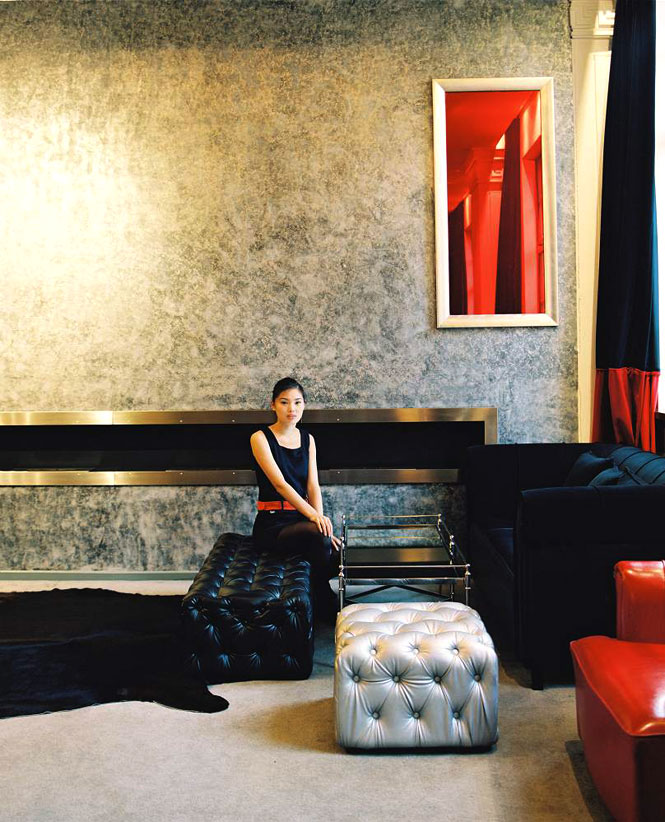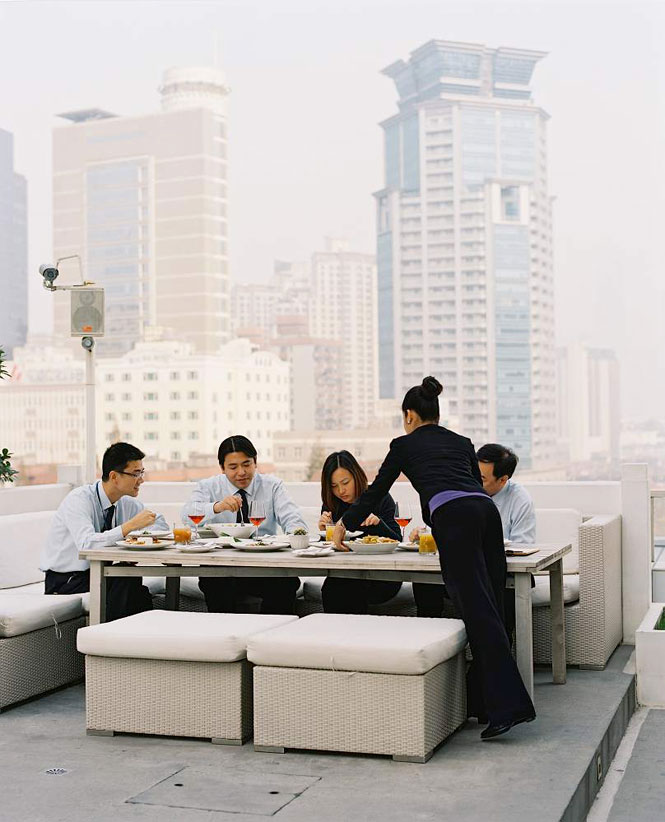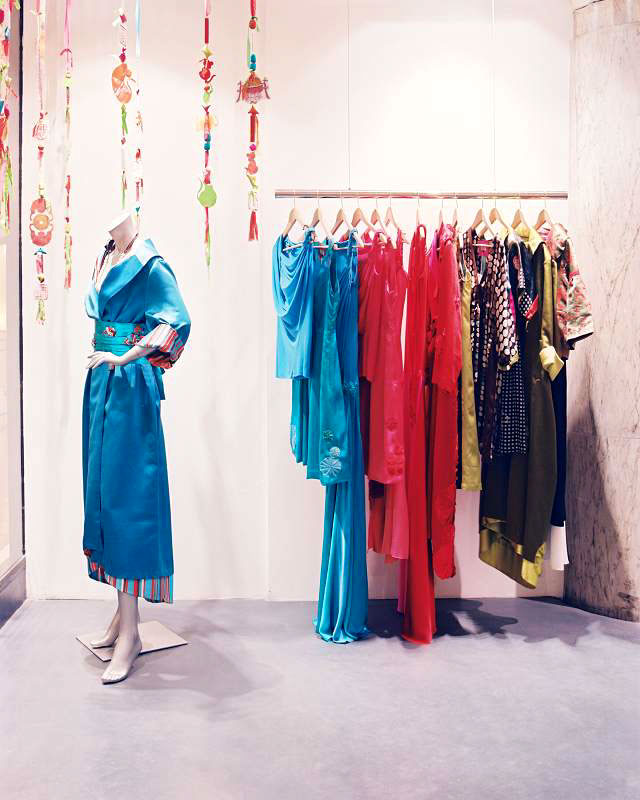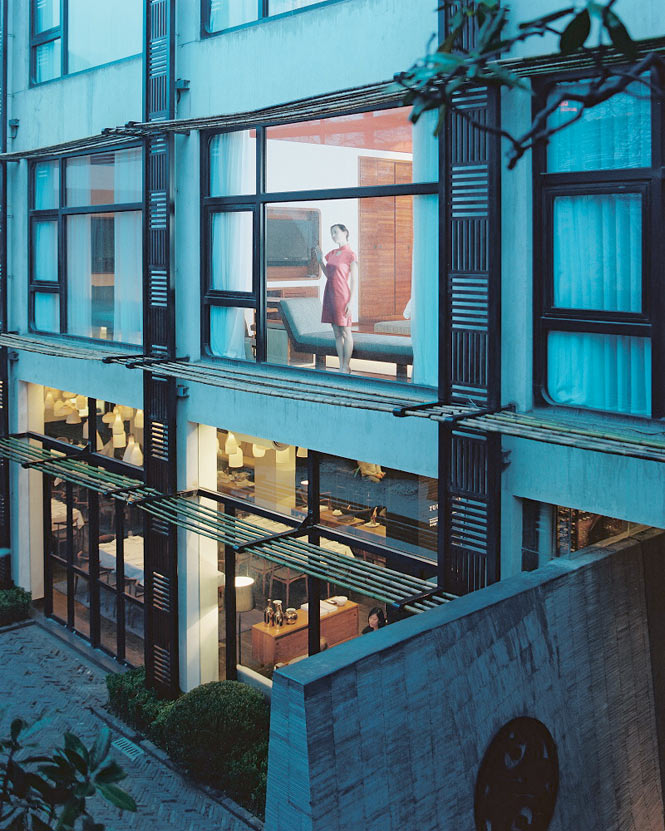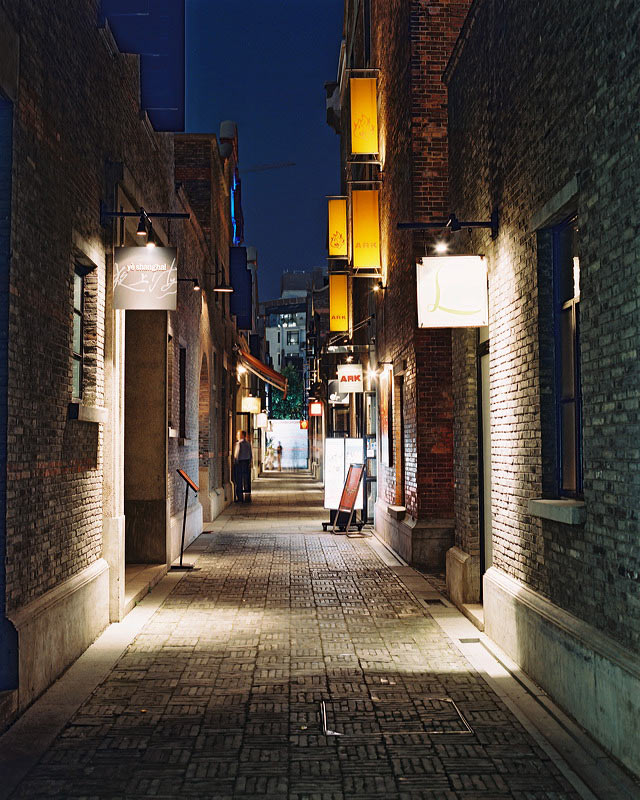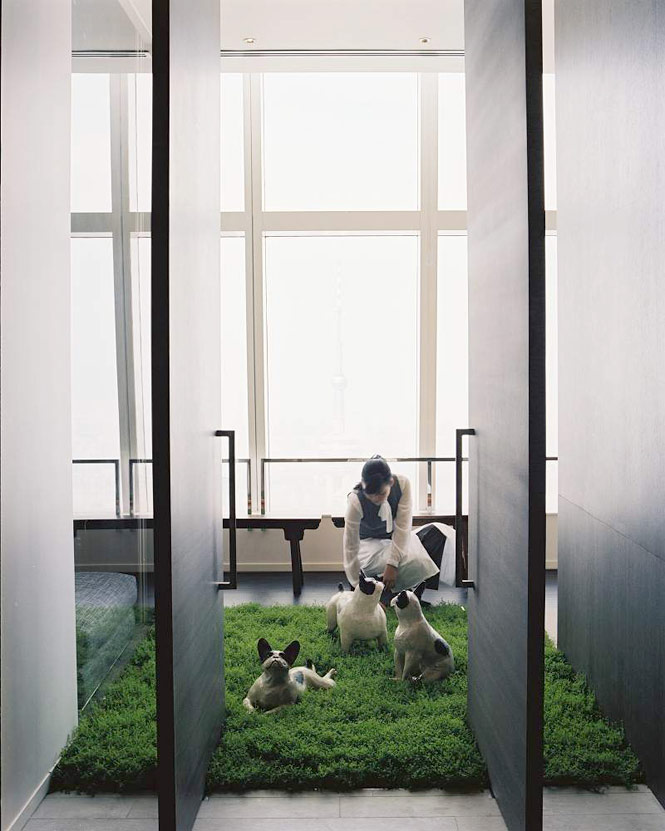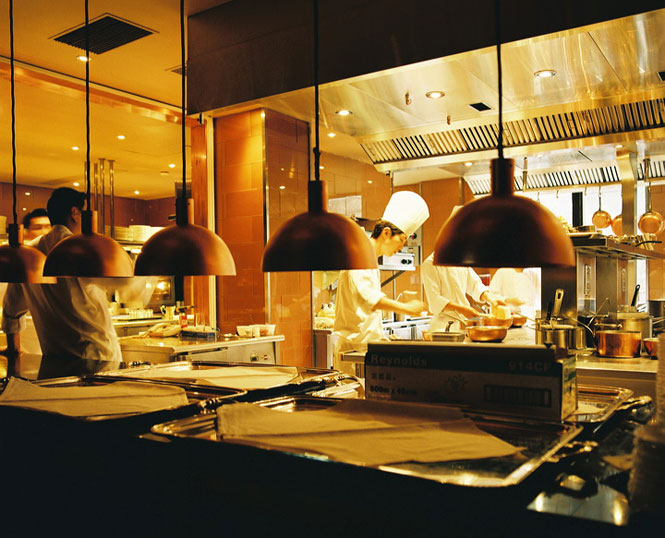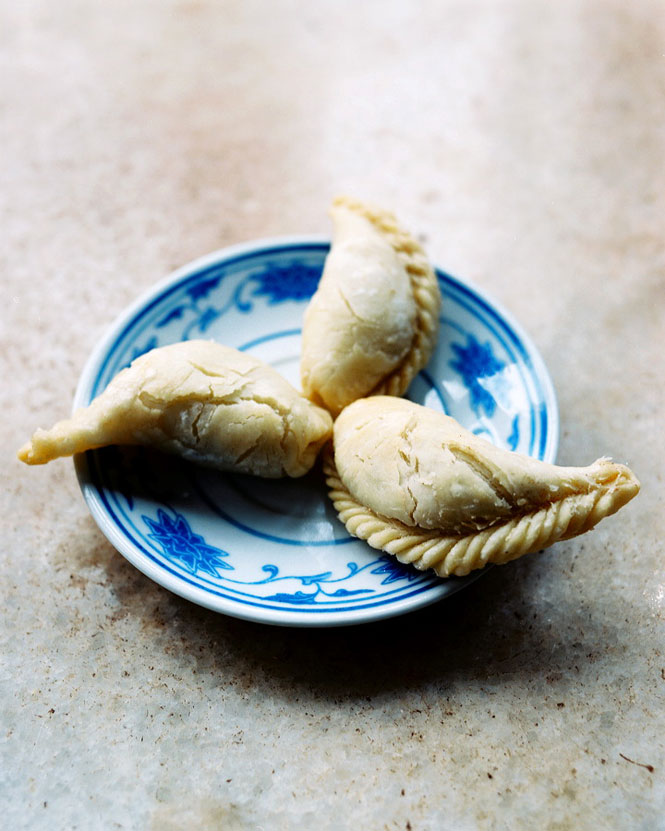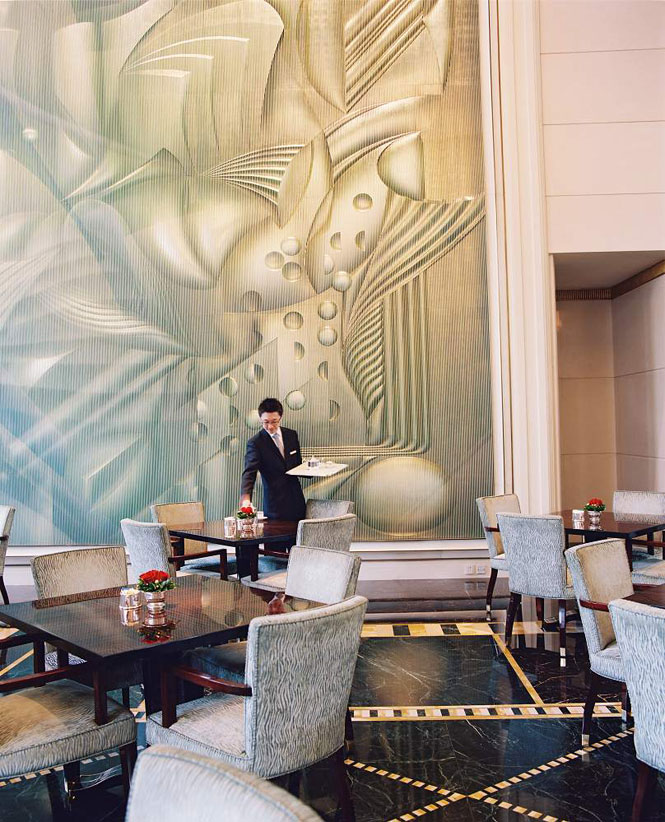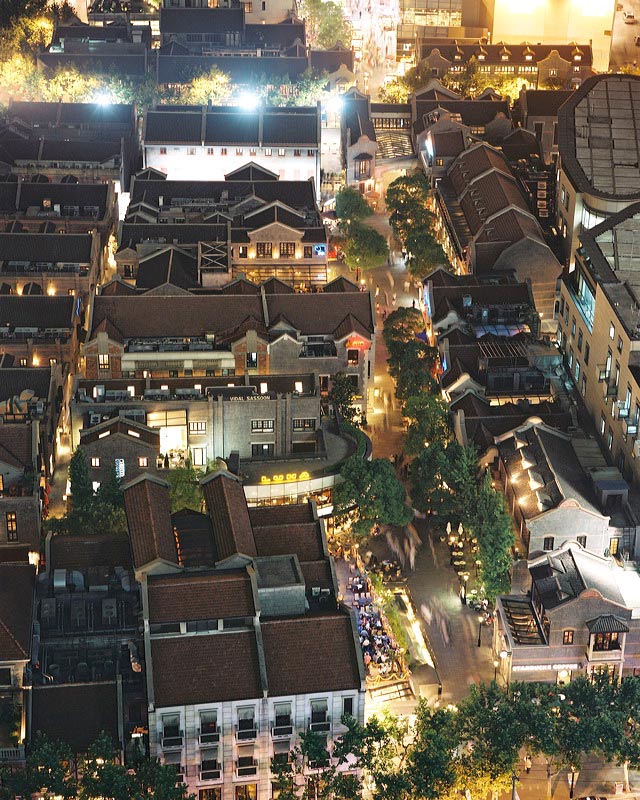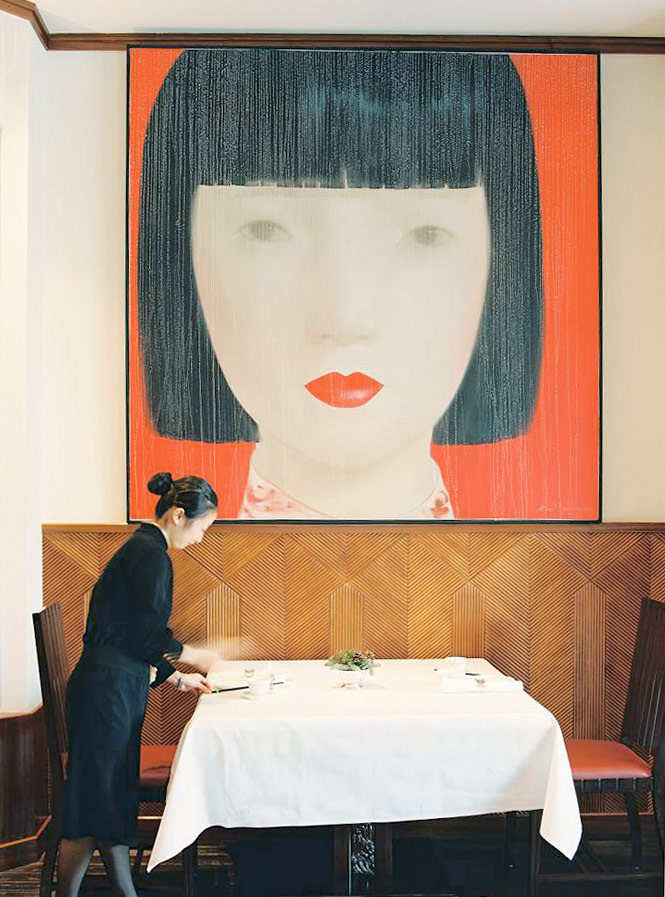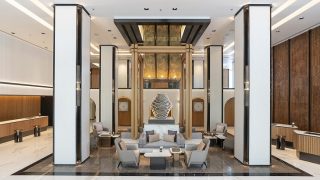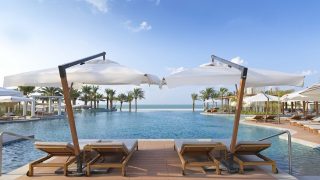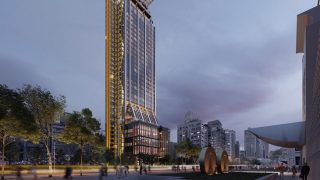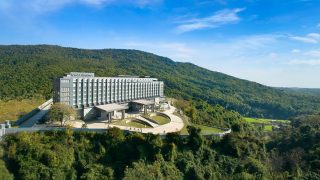Above: Views of the Huangpu River.
From classic teahouses to avant-garde boutiques, discover how–and where–to make the most of your time in Shanghai.
By Natasha Dragun
Photographs by Andrew Rowat
The sign at the entrance to the small pudong park reads: “Caution Above!” I’m assuming. I’ve been warned to watch my head as I walk under the low, arched stone gate. But when I look up, I realize there’s a lot more cluttering the sky: the 492-meter-high Shanghai World Financial Center pierces the clouds just to my left; a steel jungle of cranes and earthmovers fight for space at a neighboring construction site where an even loftier building, the 632-meter Shanghai Tower, is taking form; and the shimmering Super Brand Mall, the city’s largest shopping center, looms over the trees, casting a long shadow across a handful of workers sleeping on park benches. When I first visited Shanghai 15 years ago, most of this area was still farmland.
With an estimated 4,000 skyscrapers and 17 million people, Shanghai has never shied away from breakneck urban development. And since the announcement eight years ago that it would play host to Expo 2010—running from May 1 to October 31 and expected to be the largest (and most expensive) world fair of all time—even the fringes of the metropolis have been given a facelift.
More than US$45 billion has been spent on sprucing up the city since 2002. The makeover includes six new subway lines, two airport terminals, dozens of futuristic expo pavilions, and a coat of paint for just about every neighborhood across town. But it’s not all steel and concrete. The city has also been given a new riverside promenade, and numerous parks and gardens have opened to add weight to Shanghai’s expo theme, “Better City, Better Life.” And then there’s the thriving restaurant and bar scene, the ever-growing cache of luxury hotels, and the burgeoning art and design landscape. As this gargantuan urban renewal nears completion, there’s never been a better time to be Shanghaied.
Getting Your Bearings
The snaking Huangpu River splits Shanghai in two. To the west, Concession-era architecture, posh boutiques, and glitzy nightclubs characterize the old city of Puxi. And to the east there’s Pudong, a futuristic business hub and the epitome of “new” China with its broad boulevards and angular skyscrapers.
The Old West It’s easy to lose yourself in the narrow alleys and atmospheric neighborhoods that distinguish Shanghai’s French Concession district—the handsome Tudor mansions and camphor-tree lined streets that earned Shanghai its reputation as the Paris of the East. To the east is Xintiandi, a once-derelict neighborhood of gray-brick shikumen houses transformed into an entertainment enclave by American architect Benjamin Wood. And then there are the Neoclassical and Art Deco buildings of the Bund, built a century ago when this river town was the richest port in the Orient.
Extending 5.5 kilometers west from the Bund to People’s Square—once home to government buildings, today a vast public plaza popular for its museums—Nanjing Lu is Shanghai’s answer to Champs-élysées. The commercial lifeblood of the city for more than 160 years, the shopping strip is among the busiest in the world; if you’re after big-name boutiques, you needn’t look further than the mega-malls that clutter the sidewalks here.
The New East On the opposite bank is Pudong, a gleaming cityscape of glass, steel, and construction cranes, home to the silvery tiers of the Jinmao Tower, the bulbous pink body of the Oriental Pearl TV tower, the mirrored trunk of the World Financial Center, and, farther south, the hub of the sprawling expo site.
Where to Eat
There’s not much that you can’t find on the menu in Shanghai, from bamboo steamers piled high with soupy xiaolongbao dumplings to frou-frou fusion fare and everything in between. A good place to get a taste for the city’s delicate hu cai cuisine is Fu 1088 (375 Zhenning Lu; 86-21/5239-7878), a gem of a restaurant occupying a mansion decorated with antique chandeliers and cherry-wood dining tables. A traditional dish of “drunken chicken” (the meat’s marinated in alcohol) is spruced up with shaved ice scented with Chinese rice wine, while tea-smoked eggs get a salty kick from a spoonful of black caviar. Be warned: there’s a minimum spend of 300 yuan (about US$44) per person.
Less fussy Shanghainese fare can be sampled at Hu Xin Ting (257 Yuyuan Lu; 86-21/6373-6950), a venerable teahouse set in a Qing-era building perched over a lake near the leafy Yuyuan gardens. Every order of pu’er and oolong comes served with bite-size snacks like preserved plums and glutinous rice cakes filled with red bean paste. Should you want something more substantial, menu highlights range from petite dumplings to yanduxian, a fortifying soup made from fresh and cured pork, bamboo shoots, and knots of tofu skin.



